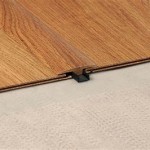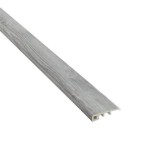Installing a vinyl plank floor can be an exciting and rewarding experience. It’s a great way to give your home a fresh look and feel. However, many people are unsure of which way to lay the vinyl planks. In this comprehensive guide, we’ll discuss the different ways to lay vinyl plank flooring, the pros and cons of each, and the steps needed to get it done.
Why Does the Direction Matter?
The direction in which you lay the vinyl planks can have a huge impact on the overall look of your flooring. It can also affect the durability of the planks and how easy they are to clean and maintain. Different directions of installation can also affect the amount of light that reflects off the floor, which can change the atmosphere of the room.
Common Directions for Vinyl Plank Flooring
The most common direction for installing vinyl plank flooring is parallel with the longest wall in the room. This will make the floor look more continuous and provide an aesthetically pleasing look. You can also install the vinyl planks perpendicular to the longest wall for a more dynamic look.
Another popular direction for installing vinyl plank flooring is diagonally. This creates a diamond pattern that can bring visual interest to the room. It is important to note, however, that this method will require more cutting and measuring, and is more time-consuming than other methods.
Pros and Cons of Different Directions
Before deciding which way to lay your vinyl plank flooring, it is important to consider the pros and cons of each direction. Here is a quick overview of the pros and cons of each:
- Parallel with the Longest Wall: Pros: Easy to install, creates a continuous look. Cons: Can be less visually interesting.
- Perpendicular to the Longest Wall: Pros: Creates a unique, dynamic look. Cons: Can be more difficult to install.
- Diagonally: Pros: Creates a unique, visually interesting pattern. Cons: Time-consuming and requires more cutting and measuring.
Steps to Installing Vinyl Plank Flooring
Once you have decided which direction to install your vinyl plank flooring, the next step is to prepare the space and begin the installation. Here are some steps to help get you started:
- Measure the room and determine the amount of vinyl planks needed.
- Clear the room and remove any existing flooring.
- Clean the subfloor and make any necessary repairs.
- Lay the underlayment and make any necessary cuts.
- Lay the vinyl planks in the desired direction.
- Secure the planks to the subfloor with nails or adhesive.
- Finish the installation by trimming and sealing the edges of the floor.
Conclusion
Installing vinyl plank flooring can be an easy and rewarding project. However, it is important to consider the direction of the planks and the pros and cons of each direction. By following the steps outlined in this guide, you can ensure that your vinyl plank flooring will look great and last for years to come.









/easy-install-plank-vinyl-flooring-1822808-07-9e82b716c3e94264b4a6084e174e9aeb.jpg)





Related Posts








